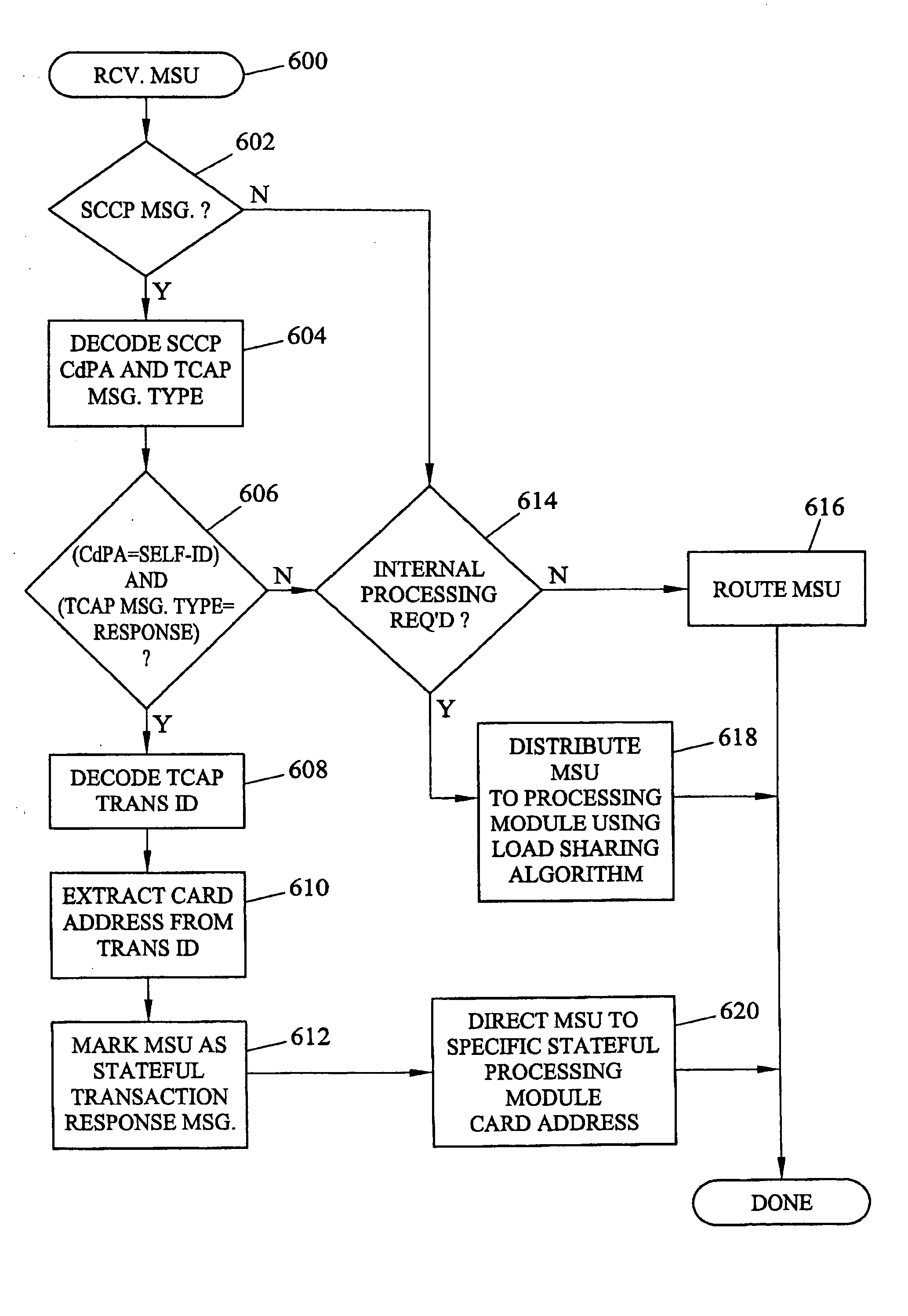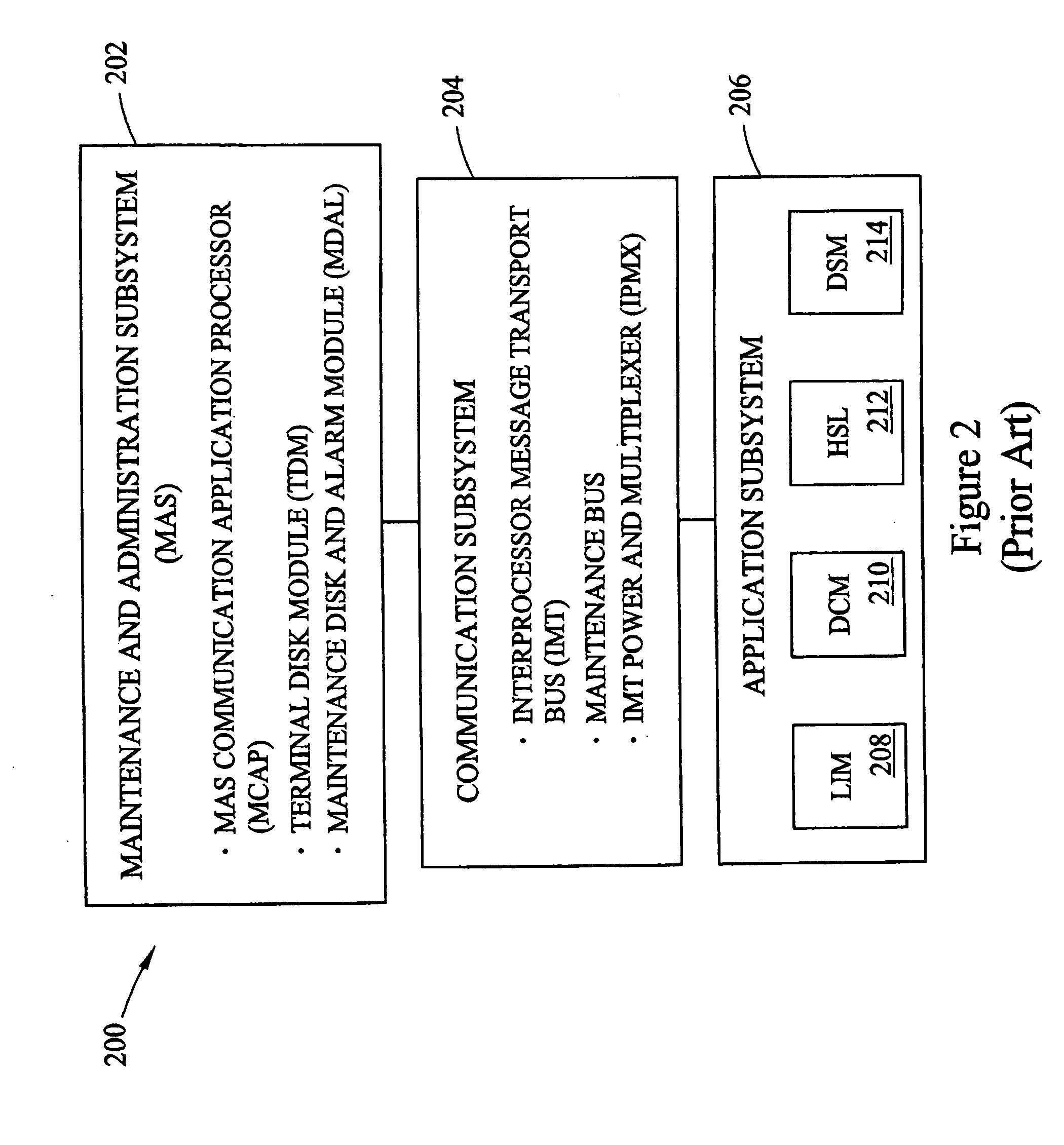Systems and methods of performing stateful signaling transactions in a distributed processing environment
- Summary
- Abstract
- Description
- Claims
- Application Information
AI Technical Summary
Benefits of technology
Problems solved by technology
Method used
Image
Examples
Embodiment Construction
[0036] According to one embodiment, the present invention includes a communications network routing node, such as an STP configured to perform stateful signaling transactions and load sharing. FIG. 2 is a block diagram illustrating an exemplary STP 200 suitable for use with embodiments of the present invention. Referring to FIG. 2, STP 200 includes the following subsystems: a maintenance and administration subsystem (MAS) 202, a communication subsystem 204 and an application subsystem 206. MAS 202 provides maintenance communications, initial program loading, peripheral services, alarm processing and system disks. Communication subsystem 204 includes an interprocessor message transport (IMT) bus that is the main communication bus among all subsystems in STP 200. The IMT bus may include 1 Gbps counter-rotating serial rings.
[0037] Application subsystem 206 includes application cards or printed circuit boards capable of communicating with the other cards through the IMT bus. Numerous t...
PUM
 Login to View More
Login to View More Abstract
Description
Claims
Application Information
 Login to View More
Login to View More - R&D
- Intellectual Property
- Life Sciences
- Materials
- Tech Scout
- Unparalleled Data Quality
- Higher Quality Content
- 60% Fewer Hallucinations
Browse by: Latest US Patents, China's latest patents, Technical Efficacy Thesaurus, Application Domain, Technology Topic, Popular Technical Reports.
© 2025 PatSnap. All rights reserved.Legal|Privacy policy|Modern Slavery Act Transparency Statement|Sitemap|About US| Contact US: help@patsnap.com



